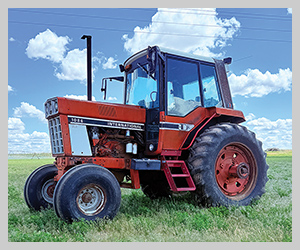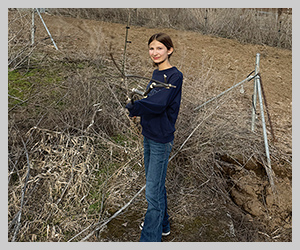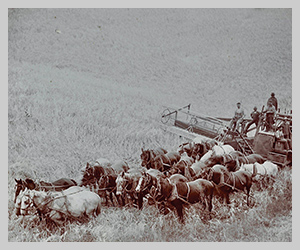
Growing up on the farm provided me with several opportunities to operate equipment with manual transmissions. Several sets of gears allowed the operator to find the very best speed/power for any circumstance, whether in the field or out on the road, empty or fully loaded with produce. One gear in particular I will always remember was the “compound gear,” affectionately called the “granny gear” on our farm. When you needed and found the granny gear, it was because the load or hill was particularly strenuous, or perhaps the road was too muddy for regular passage. Somehow, the granny gear would synchronize the effort of each wheel at just the right speed to provide additional torque and keep the optimal traction to get the load through.
The current farmland leasing market is experiencing similar shifting with a strenuous load to carry and a need for the discovery of consistent traction. Specific external trends are defining the market for leased farmland across the entire commodity complex, with every crop and land type feeling the effect.
From landlords to producers, let’s consider three important trends impacting owner returns and producer sentiment amid the leasing landscape.
Land values and shrinking farmland returns. Historically, farmland values across the country have enjoyed steady and moderate appreciation. However, over the last 15-plus years, the pace of this appreciation has been accelerated beyond normal year-over-year appreciation. On-farm liquidity, higher commodity prices, and solid returns invited internal and external capital to move the market for farmland of all types, all looking to capture percentage returns higher than other standard financial instruments following the economic downturn of 2008.
The natural course of any market that sees sustained and relentless upward movement is that, eventually, it will find that it has arrived or passed the ability to continue the same pace under the given market conditions. The market will begin to moderate and even somewhat retrace its path in a search for grounded foundational support to justify the continued influx of investment.
From crop share to cash leasing arrangements, the past 18-24 months have seen pressure and retraction of per acre returns to farmland owners due to both internal and external forces that have shaped uneven outcomes. Agriculture is prone to up and down markets as demand and productivity pass through cycles, and while acute in nature, this moment in the cycle feels especially heavy due to the number of factors at play.
External forces of impact influencing current leasing decisions. Compounding the search for market stability amid higher land values are earnest producers doing everything they can to find profitability amid rising crop inputs, cost of operating capital, labor dynamics, regulation, and the maintenance or replacement of the machines necessary to maintain nominal production levels.
The short of it is that the American farmer’s effort to grow a bushel of grain, a bin of apples, a ton of hay or potatoes is colliding with the forces of inflation, product demand, foreign trade, and depressed commodity prices not seen for many decades on a scale that outstrips previous challenging times. Considering the most basic questions at the forefront of a producer’s demand for farmland are what to plant, and how much can be put into the crop. These forces are moving many producers to make difficult decisions regarding leased farmland as well as the size and scope of their operations. Working for “break-even” propositions under moderately growing financial stress is becoming an apparent overall producer sentiment.
Producer sentiment and demand for leased land. Given the price levels of commodities across all agriculture sectors, active producers are experiencing legitimate pause in the consideration and demand for additional leased farmland acres. Across the region, producers, for the most part, have continued to maintain long-standing leasing relationships, which remain an important barometer to the leasing market.
Furthermore, producers once historically eager to add acres to their operation — knowing that growth in land base often translates into an increased ability to produce at a more efficient and productive level — are now reducing their demand and pace for additional acres, looking instead at remaining viably “right sized” to their current team and fleet of operations. For some operators, this slowing in expansion will likely prove to aid in their ability to weather the current challenges facing the industry.
Looking forward, producers and owners of farmland would do well to have an open conversation about what is sustainable given the challenges that face the entire agriculture industry. Efficiency, grit, and a willingness to “shift” to find sustainable traction will be required by all who intend to produce food, fiber, and fuel in this environment. Perspective and perseverance are the hallmarks of involvement in farmland stewardship and will be key to coming out on the other side of these headwinds.
Tim Cobb is a farm kid from Eastern Washington and is the owner of Farmland Company, based in Spokane, Wash. Farmland Company specializes in direct farmland management, real estate brokerage, and consulting across the PNW. For more information, visit the company at farmlandcompany.com.















